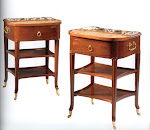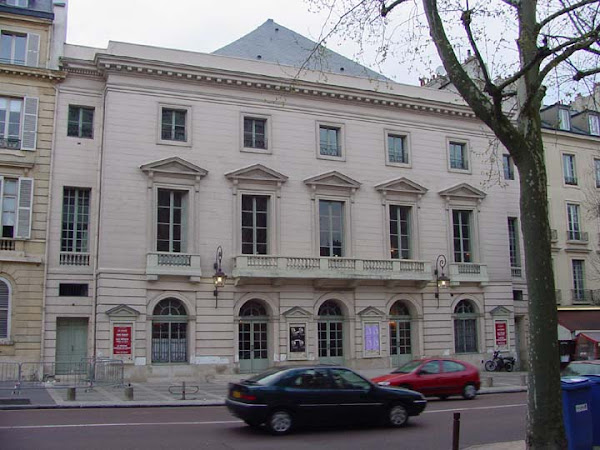
The Chateau de La Motte Tilly stands on the site of what was formerly an old Medieval house and was built in 1748 by the brothers Pierre Terray de Rozières, Consieller au Parlement and Procueure général `a la cour des aides along with his more important brother the Abbé Joseph Terry who was the money man for the government and Louis XV's last Contrôleur General des Finances. To anyone familiar with the increasingly precarious state of the growing treasury deficit at the time, it's obvious Messr L'Abbé did not have an enviable job. Though for the record, his policies and those of the king at the time would have averted the cataclysm of 1789 had only Louis XV and his reforming ministers had a few more years and the King not struck down with smallpox in 1774 which ended this happy reign in the joyful 18th Century too early.

The brothers Terray, chose a lesser remembered architect François Nicholas Lancret to design this fine seignorial country seat. He was the nephew of the better known painter Nicholas Lancret. The view from the garden side with the reflection of this handsome residence is mesmerizingly beautiful... But it's largely the fine interiors and appointments that concern us here. For any collector or enthusiast of 18 eme French decorative arts, the chateau, which is open to the public, is a must. However don't expect to see total archeological fidelity to 18th Century furniture arrangements. The visit can be very rewarding if you're willing to understand this was a collection arranged in the late 19th and early 20th Century and evokes rather than recreates 18th Century room arrangements. Hence be prepared to see fine stamped 18th Century furniture, paintings, busts and decorative appointments of all kinds and of the highest quality. But also understand you'll see plenty of electric table lamps and other modern day features which is more in the mood of an interior by Maison Jansen of Paris. incidentally, many scenes from the film Valmont were shot here.
Below is the entrance hall...

Below are images of the ground floor reception rooms with a drawing room, library, billiard room and dining room.










In the dining room, there was a very instructive comparative pair of table settings to demonstrate the difference between 18th Century service`a la Française and a 19th Century service`a la Russe.

Here is an 18th Century French table setting with cheerfully elegant Sevres porcelain.

The upper story bedrooms are lovely decorative ensembles in Louis XV, Louis XVI and Empire Styles!





In 1910, a decendant of the Terrays, The Comte de Rohan Chabot, bought the house. Under his stewardship, the restoration of the interiors - of which sadly much is lost due to the pillaging that transpired during the revolution and again during WWII - was greatly brought back to life and evokes the original period with a standard that would please any serious museum curator. The blue drawing room retains the only original boiseries. However the Grand Salon with it's fine seating furniture signed by Tilliard (once owned by Madame de Pompadour) is ravishing and sumptuous and very much in the taste of the 18th Century. Like many a great chateaux in France conserving - to some degree - its original 18 eme spirit, The Chateau de La Motte Tilly also has some rooms appointed in early 19th Century Empire. The Library with its Winterhalter oval portrait of Rohan Chabot's mother, Jeanne Terray de Morel Vindé is another gentle 19 eme touch... Much of this exceptionally lovely house's state of conservation is due to the daughter of the Comte de Rohan Chabot, La Marquise de Maillé, who was responsible for the furnishing of the rooms as we see them today. She was widowed at a young age, and devoted herself largely to the study of Medieval architecture. After her father's death in 1964, she set on a course of action to also install central heating and other modern comforts. In 1972, the chateau was given to The Caise Nationale des Monuments Historiques et des Sites and since 1978, it has been open to the public. Unlike other houses that are also on view, this one does not - nor pretends to - appeal to idle tourists. So happily for those of us who deeply and earnestly want to see great 18 eme French furniture and decorative appointments in the right setting, this is a place to which one must make a pilgrimage! Many thanks to the lovely fun and informed private guide Allison Crossley a delightful UK transplant to France who also runs a long established translation service in the area. She most kindly collected me at the train station after figuratively holding my hand via cell phone as I changed a series of trains from Paris to get there and drove me about once I arrived. She kindly showed me the chateau very leisurely and accepted to be my guest at a very animated friendly lunch at a nearby local haunt which was sensational!








